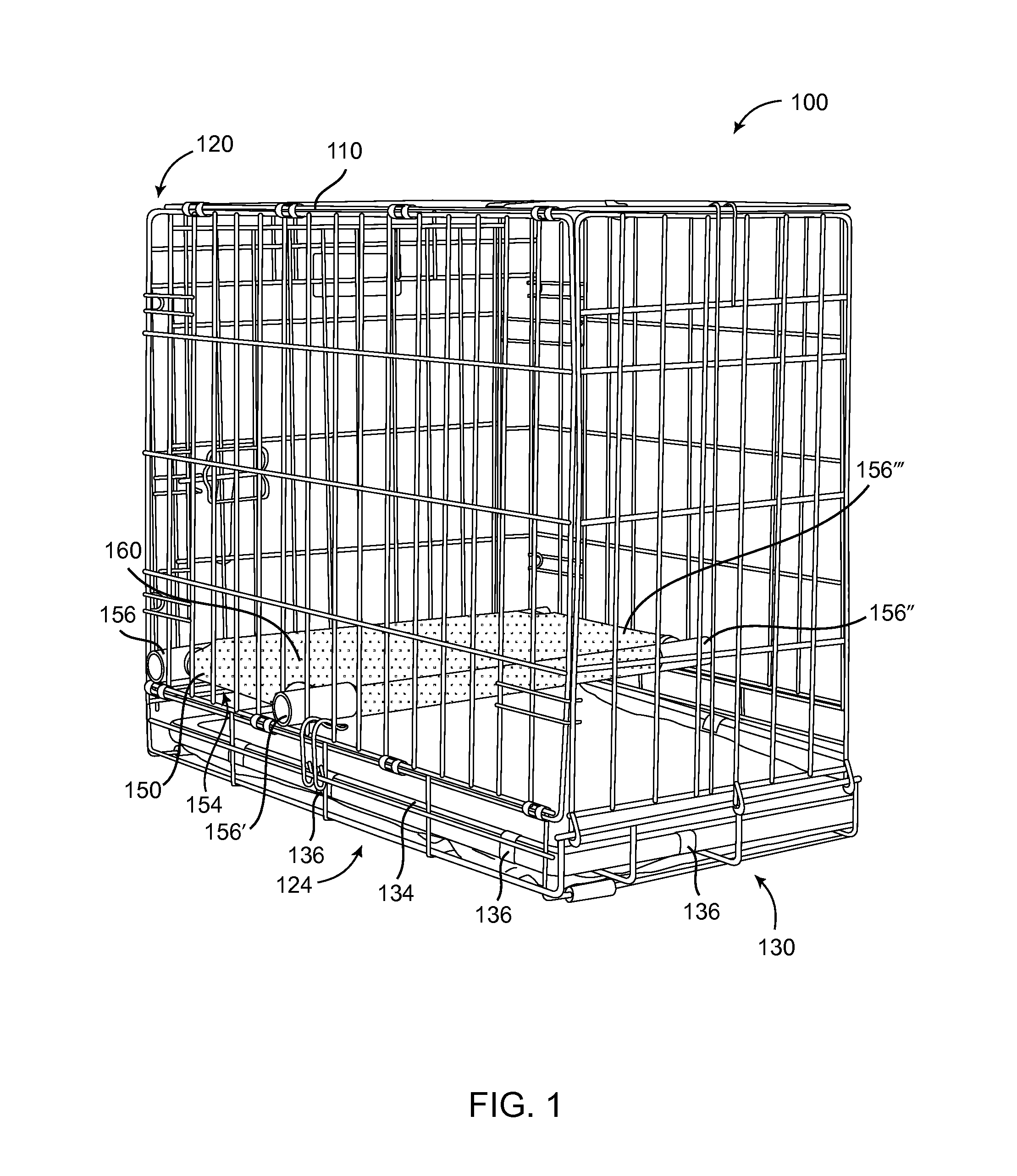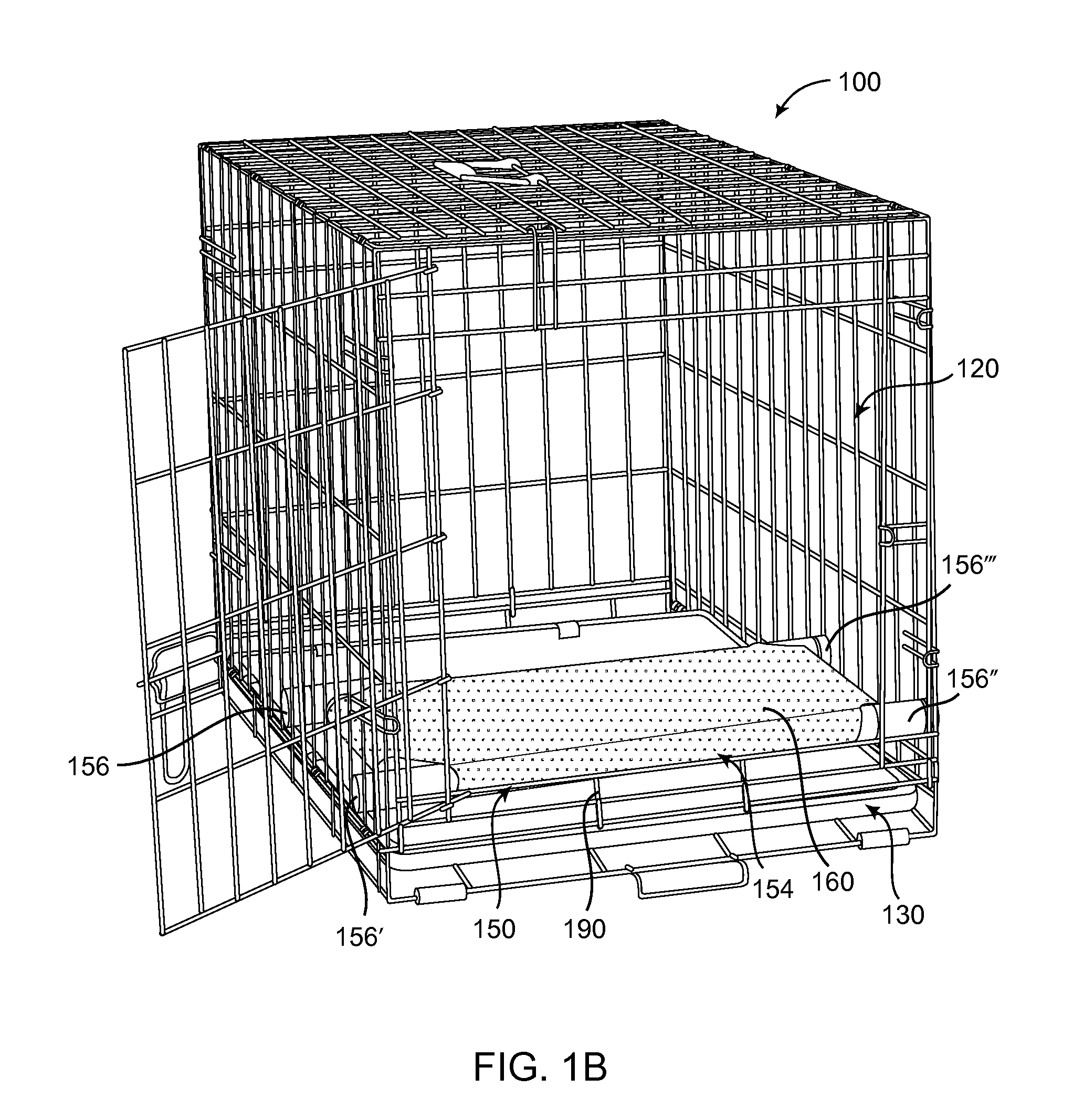Pet housetraining crate system
a cage system and cage technology, applied in the field of pet housetraining cage system, can solve the problems of difficult puppies in extended time in a cage, many families are not able to keep constant supervision of their dogs,
- Summary
- Abstract
- Description
- Claims
- Application Information
AI Technical Summary
Benefits of technology
Problems solved by technology
Method used
Image
Examples
Embodiment Construction
[0028]FIG. 1 shows a full view of the system 100, as seen from the rear of the cage. The system is made up of the waste tray section of the system and the bedding section of the system. Both sections of the system are enclosed within the frame of the cage 110. The cage as depicted is a metal wire-frame cage, with a door 120 present on the opposite end from the view depicted. Alternatively, the cage could be made of other materials, such as plastic or wood. The side panels of the cage must provide for perforations to support the bedding platform contained within the system. In the preferred embodiment, the rungs of the wire cage serve as appropriate perforations.
[0029]The waste tray section is comprised of a base plastic tray 130, an absorbent pad 134, and a plurality of metal clips used to secure the pad to the tray 136. The tray 130 is made of a hard plastic, with a raised edge around the entirety of the tray to assist in securing the absorbent pad. The absorbent pad 134 sits on to...
PUM
 Login to View More
Login to View More Abstract
Description
Claims
Application Information
 Login to View More
Login to View More - R&D
- Intellectual Property
- Life Sciences
- Materials
- Tech Scout
- Unparalleled Data Quality
- Higher Quality Content
- 60% Fewer Hallucinations
Browse by: Latest US Patents, China's latest patents, Technical Efficacy Thesaurus, Application Domain, Technology Topic, Popular Technical Reports.
© 2025 PatSnap. All rights reserved.Legal|Privacy policy|Modern Slavery Act Transparency Statement|Sitemap|About US| Contact US: help@patsnap.com



